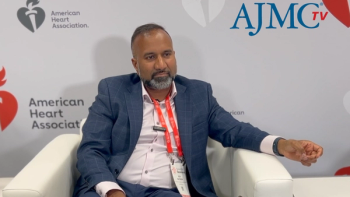
Embedding Reflex Biomarker Testing to Advance Precision Lung Cancer Care: Jonathan Thompson, MD, MS
Jonathan Thompson, MD, MS, emphasized that comprehensive biomarker testing with next-generation sequencing and PD-L1 analysis—implemented as reflex testing at biopsy—is essential to guide precision therapy in lung cancer and to address persistent disparities in timely, equitable access to care.
At a recent
Despite these advances, Thompson highlighted ongoing disparities in testing access, with many patients nationwide still not receiving timely or complete biomarker analysis. Thompson advocated for reflex testing at the time of initial biopsy, led by pathologists, to reduce delays and ensure equitable access. Without such systems in place, testing may be delayed until oncology consultation—or missed altogether—resulting in suboptimal care. He stressed that embedding reflex biomarker testing into routine workflows is essential to advancing precision medicine and improving outcomes for patients across all stages of NSCLC.
This is the first part of a 6-part interview series with Thompson.
This transcript was lightly edited; captions were auto-generated.
Transcript
Precision medicine has transformed lung cancer care. How can we improve early diagnoses and equitable access to biomarker testing in both NSCLC and SCLC?
In the world of [NSCLC], biomarker testing is crucial for us to be able to design the right treatment. Really, we need 2 key types of biomarkers. We need [NGS] to look for any kind of actionable genomic alteration. These are mutations like EGFR or fusions like ALK or ROS1. Before we can really assign the treatment, we need to have that genomic testing available to see if a patient might benefit from our targeted therapies, generally tyrosine kinase inhibitors that act on those mutations.
Beyond just [NGS], we also need PD-L1 analysis. This is done through immunohistochemistry on the tumor cells. For the patients who aren't eligible for targeted therapies, PD-L1 testing can help stratify how well patients might benefit from our other type of the main medication that we use called immunotherapy, where patients with high PD-L1 levels tend to benefit more from immunotherapies than those with low.
Really across all stages of [NSCLC], we need those 2 biomarkers to really decide if a patient may benefit from more of a targeted therapy approach or an immunotherapy approach. The tricky part is that patients who have actionable genomic alterations tend to not benefit from immunotherapy. We really need to have the full piece of the puzzle to make sure we have the right treatment assigned. Clearly, we know to be able to treat patients, whether stage I or stage IV or anything in between, we need to make sure all of our patients with newly diagnosed [NSCLC] are being tested for the biomarker, and that's not currently the state of affairs everywhere in the world, everywhere in the country, or even everywhere in our state. The way we move toward that is by making these tests largely reflex testing, so relying on our pathologist to send out for [NGS] at the time of the initial biopsy, and similarly to do the PD-L1 testing reflexively. We find that if we don't do reflex testing, what tends to happen is either the patient has delays in the biomarker analysis, or they have to wait until they meet the oncologist to have the testing ordered, or the testing just never occurs at all. Really, we need to make sure, to the best of our abilities, we as health care systems move toward reflex testing.
Newsletter
Stay ahead of policy, cost, and value—subscribe to AJMC for expert insights at the intersection of clinical care and health economics.





























































